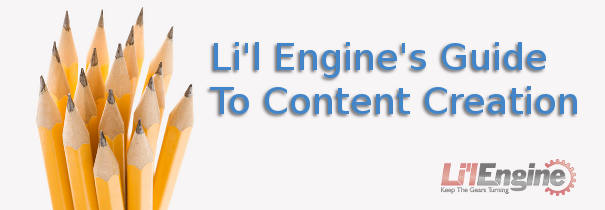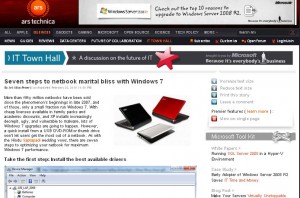Content Creation: In-House, Outsourced, Quality, Quantity, and SEO

Everything you read about SEO at some point comes back to the same thing: offer great content. You can put every SEO tactic to work at the same time, but if your site doesn’t have great content, it’s like putting Robert DeNiro in a Valentino cocktail dress and Christian Louboutin heels: it’s worth a look, but you’re probably not going to go back to it very often. Whether you write the content in-house or outsource it is really a matter of your staff makeup, your budget, and your preferences.
Regardless of whether you in-house or outsource your content writing, here is what you need to know about good web content.
First of all, people usually don’t “read” on the web. It’s like a glossy magazine. People scan pages looking for images or headlines that appeal to them and often skip past entire blocks of text. Good web content has number of attention-snaggers: the occasional boldface font, headings and subheadings, and plenty of white space around the content. Headings need to be simple and clear. Links must stand out by way of color or underlining, and lists, whether bulleted or numbered, should be used where appropriate. Lists shouldn’t have more than about 10 items, and in general, the shorter the list the better.
The first screen shot is part of a page from Ars Technica (arstechica.com). This is how good web content should be displayed. The title indicates that there will be a list. The graphics are clean and include a helpful screen shot. The headings break up the text into digestible chunks, and there isn’t a bunch of annoying flashy stuff trying to give you a migraine.
Keep in mind that people read screens about one-quarter slower than they do a printed page, and that screen reading is harder on the eyes. Keep the fonts at 10 or 12 point size. Internal links will let your readers jump to the parts of the page they’re interested in. If your external links open in a new window, let your reader know. Some users flip out when they click a link and suddenly windows are opening everywhere. The anchor text to your links should be descriptive. Sure, you’re going to use the occasional “click here,” but try to keep that to a minimum and use anchor text that’s descriptive.
If you’ve written a page that you expect will be printed out for reference purposes or whatever, here are a few points to bear in mind. Keep the links to a minimum for stuff to be printed, since they won’t be clicking them from their paper. If you make a “print version” of a page, indicate in your robots.txt file that the print version shouldn’t be crawled. That will ensure that you don’t get dinged for duplicate content.
On paper, serif fonts are easier to read. Who knows why, but it’s true. Your print pages should be black text, white background, and a minimum of graphics. One of the fastest ways to incur the wrath of a visitor is to give him a print page that will drain all the ink from his printer.
But back to the web pages that will be read on-screen.
Make sure each page uses its <title> tag properly. The information in these is seen in search engine listings, history listings, and favorites. They’re what other webmasters use as link text when they link to your site. The first word in the title is most important. Think about it: if your visitor has half a dozen tabs open in her browser, the titles of those tabs will get shorter and shorter until they’re just one word long. Since that one word is the first one in your title tag, make it count.
The addendum to this rule is that if you have a large site, make sure each page has a title all its own. Sure, this is a pain and it’s tedious, but your site will perform better in the search engines if you go ahead and do this.
 Your content should start with the conclusion. If you write your pages so that you build up to a whammo conclusion, nobody will read it because they won’t get that far. This isn’t Walden, and you’re not Henry David Thoreau. You want to start out with the big news and then go into the details. The phrase “above the fold” is even more important to web readers than newspaper readers. They’re not likely to scroll down for something unless they’re hooked by the first or second sentence.
Your content should start with the conclusion. If you write your pages so that you build up to a whammo conclusion, nobody will read it because they won’t get that far. This isn’t Walden, and you’re not Henry David Thoreau. You want to start out with the big news and then go into the details. The phrase “above the fold” is even more important to web readers than newspaper readers. They’re not likely to scroll down for something unless they’re hooked by the first or second sentence.
Writing good web content is work, and you may not have the time or inclination to do it. That’s when you consider outsourcing. You already know that your website needs to be updated regularly, and if you don’t have someone on your staff who’s gung-ho to do this (and can be the alloted the necessary work time), then you should consider hiring someone to do it.
If you hire a freelancer or go through an agency, it is important to clearly define an initial job for the writer. Try to be as specific as possible as to tone, topic, length, and how densely keywords or key phrases need to be included. Consider their first assignment a test run and see how well it meshes with your needs. You may want to keep this person on hand regularly because updating your site needs to be regular. It almost doesn’t matter how often you update – though the bigger tech blogs are updated more than once a day – but regular updating is a big plus and it builds up your site’s archive of valuable information while you’re building PageRank and ascending in the search engine rankings.








